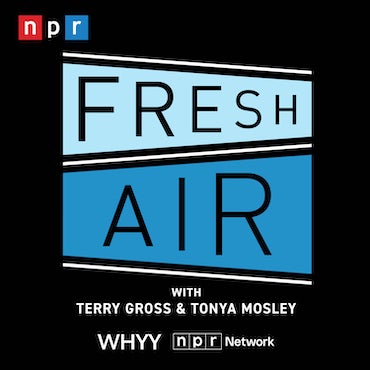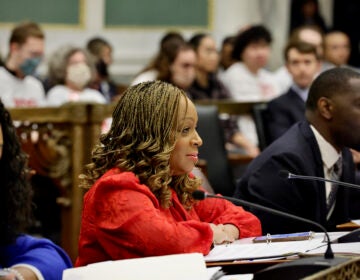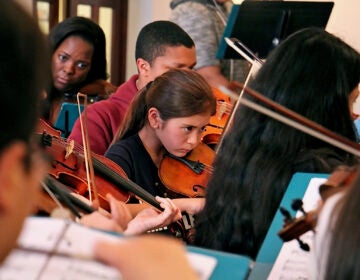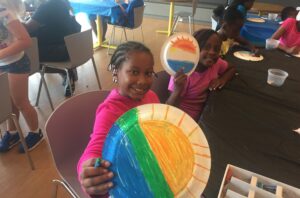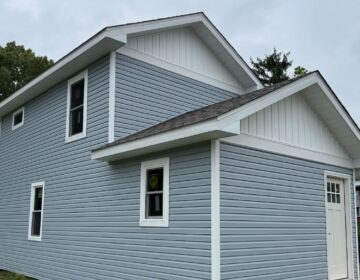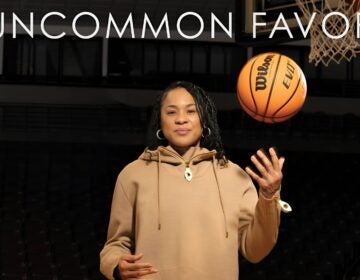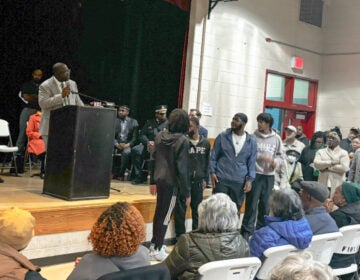Philly pilot program brings playful learning installations to affordable housing communities
The Live and Learn pilot program is installing playful learning spaces and activities at two affordable housing sites in North Philadelphia.
Listen 5:04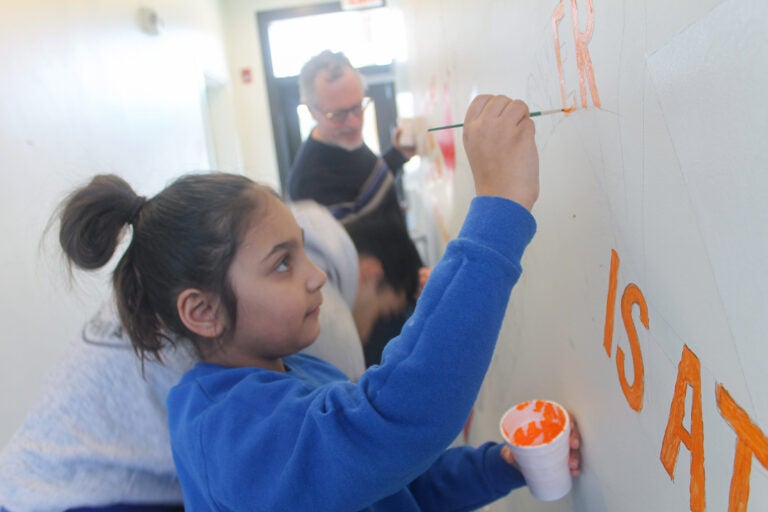
Families and volunteers paint murals inside an affordable housing complex in North Philadelphia on Saturday, Jan. 25, 2025. The community paint day is part of an ongoing Live and Learn pilot program that focuses on strengthening children’s cognitive, social and emotional skills through playful environments. (Nicole Leonard/WHYY)
From Philly and the Pa. suburbs to South Jersey and Delaware, what would you like WHYY News to cover? Let us know!
About two dozen volunteers were packed into the narrow lobby of a Susquehanna Square affordable housing complex in North Philadelphia on an icy Saturday morning.
“Good morning, everyone!” Deirdre Hyman shouted over the chatter, distributing boxes filled with brushes and cups of paint. She pointed to a scene of a mountain and flying books sketched out in pencil on the first-floor wall.
“There’s a reference photo also taped on the wall so you can see what it’ll look like once it’s colored,” she said. “Everything is already pre-poured for you. Please do not mix the colors.”
Volunteers grabbed their kits, dipped their brushes in paint and quickly started bringing the sketched murals to life, like a giant paint-by-numbers activity.
“Overall, [residents] say it makes the place feel brighter, it’s more fun to be in,” said Hyman, a mural artist and program coordinator at Tree House Books.
But this mural has a bigger mission; to offer opportunities for conversation, fun and learning.
The installation is part of a new Philadelphia pilot program called Live and Learn, where the goal is to create spaces in affordable housing communities that can help kids strengthen their skills in language and vocabulary, math and science, problem solving and more.
The project, funded by the William Penn Foundation, is based on the science of playful learning and child development.
“How do human brains learn? Well, they learn when the mind is active, when things are meaningful to them, when it’s socially interactive, when you keep learning it in many different ways and finally, when it’s fun,” said Kathy Hirsh-Pasek, a professor of psychology at Temple University.
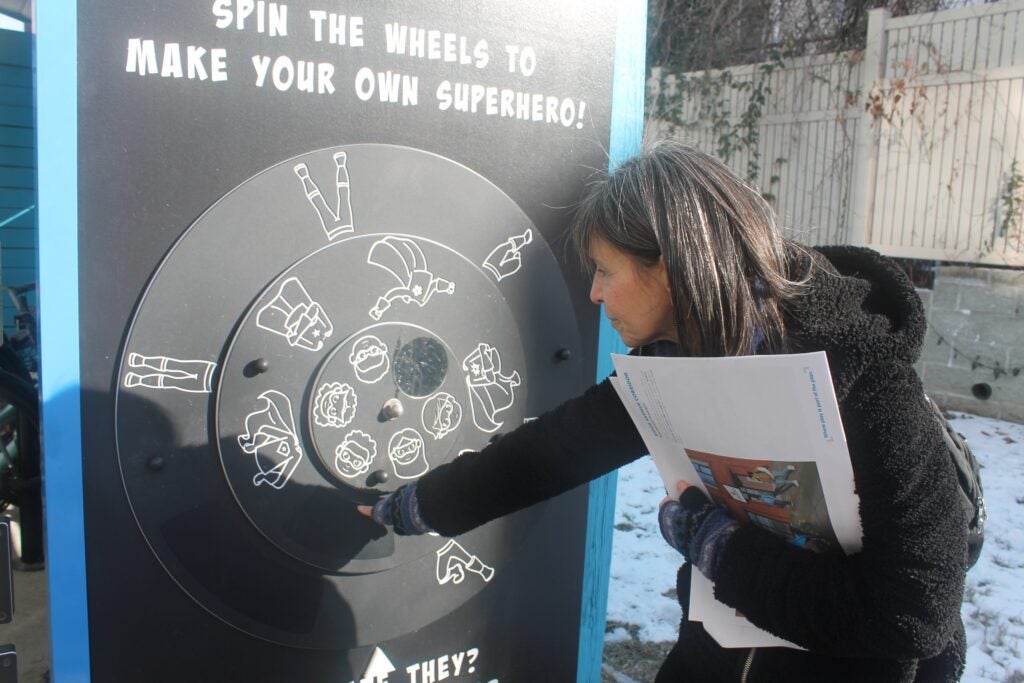
Hirsh-Pasek is a member of the Live and Learn advisory committee and considered an early pioneer of the playful learning model, which is different from free play.
“Think [making a] fort out of the pillows on your couch — that’s free play. Do whatever you want,” she said. “But you can also see that it’s unconstrained. It’s very important for kids.”
Now, Hirsh-Pasek said, think of various activities in a children’s museum.
“It has a learning goal for each of the things that were created for each installation, but at the same time, the kids are the ones who are driving the cars for their own learning,” she said. “And that’s really, really cool, because what we know [is], when kids have agency, when they have self-determination, they learn better.”
Opportunities for playful learning can be easy and cheap to add to an existing environment, like a playground.
“Something as simple as putting little hatchet marks on the pole that leads up to some structure in the playground changes it from, ‘I’m climbing to blah’ to ‘Look, I climbed 5 feet to get to blah,’” Hirsh-Pasek said. “It changes it into a STEM moment.”
STEM stands for science, technology, engineering and math, areas that educators have prioritized and marked for improvement as the United States lags behind other developed countries when it comes to related standardized test scores.
But not all families have the resources to create or expose their kids to these kinds of fun, playful learning environments. That’s where the Live and Learn pilot program is stepping in.
“Kids who live in affordable housing are likely to be the farthest from high quality, early learning environments,” said Sarah Lytle, executive director of Playful Learning Landscapes Action Network. “Our goal is to really think about what we can provide in that housing space to really supplement what kids are already getting or may not be getting in their formal learning environments.”
The pilot launched last February and is expected to wrap up this summer. In addition to buildings in Susquehanna Square, the project also includes units in the Sharswood neighborhood. It’s a collaboration between playful learning researchers and educators, housing developers, local community organizations and parents, who’ve given their direct input for installation goals, designs and themes.
Installations like murals, puzzle games and climbing bookcases can be added to existing building structures and spaces. But Lytle said the long-term goal is to get housing developers to incorporate playful learning ideas from the beginning of construction, like with picking out floor tiles.
“[Developers] are probably naturally going to buy very boring beige floor tiles, but with a playful learning person on that team, we can say, ‘Let’s choose this set of floor tiles, we’ll arrange them in a particular way,’ and all of a sudden you have a playful learning moment in lobby space at that affordable housing complex,” Lytle said.
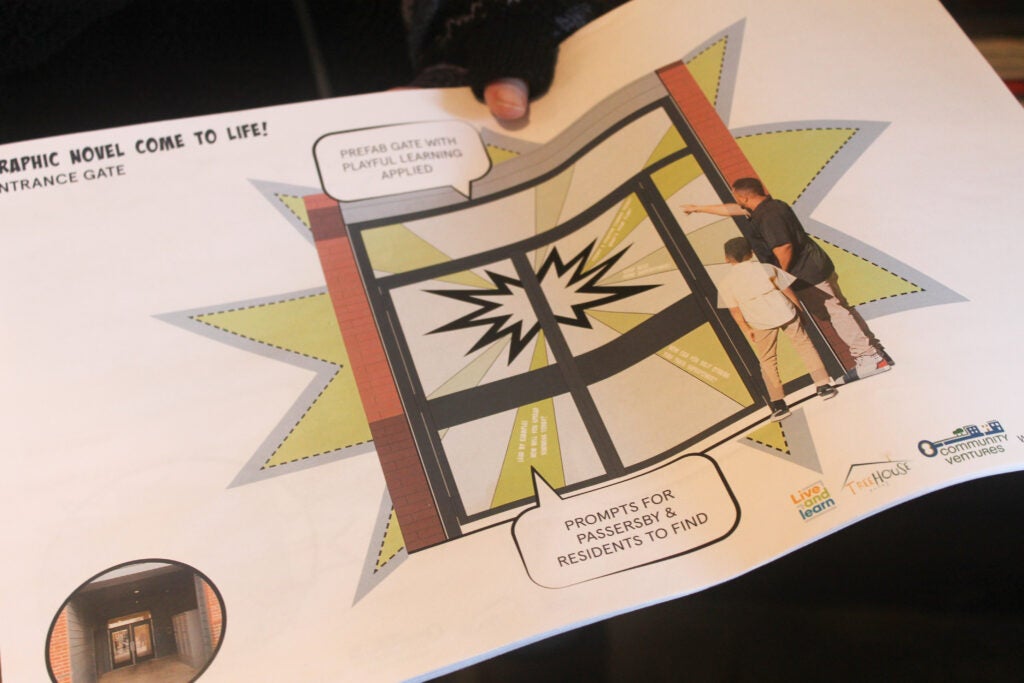
At a second Susquehanna Square affordable housing unit a block away, Watchdog Real Estate Project Management architect Heidi Segall Levy stepped into a large backyard area. Originally, all that was out here was a wooden bike shed.
“All four sides were just the blue painted slats,” Segall Levy said.
Now, some of the wooden slats are replaced with rotating blocks of letters that kids can use to form words or patterns. There’s also a wheel of discs that they can turn to create different superhero characters.
On the other side, a platform stage and large chalkboard has been built into the shed wall. Here, kids can draw their own scenery and put on plays or skits.
“Every day, if they have a new idea or they get inspired by something, it’s like, ‘Oh, I can draw that now,’ when they maybe didn’t have that idea yesterday,” Segall Levy said. “It’s just trying to figure out as many ways as possible to just keep them engaged.”
Back at the volunteer painting event, Regina Robinson carefully filled in letters ‘A’ and ‘K’ with bright orange paint. The message prompt on the mural reads, “Do you climb up the mountain or fall down it, knowing the answer is at its peak?”
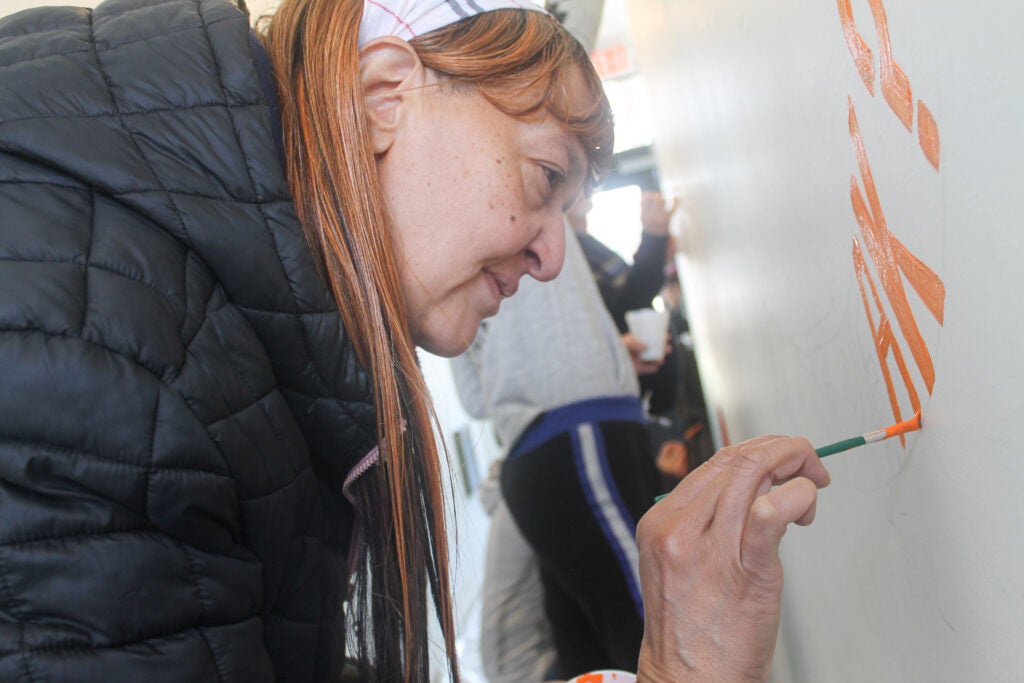
For the past year, Robinson has been participating in community meetings with other parents to give her input on the installations. She said taking part in the planning was a welcome change.
“No one had ever asked me how I felt, what I wanted, what I thought. So it was like, really? Me? You’re asking my opinion?” she said. “It made me feel really good, it made me feel a part of.”
Robinson came to the paint day with her daughter, Faith, who has autism. She said the playful learning events have created new bonding moments for the two.
“It was just like engagement with you and your child, and the smiles on her face,” Robinson said.
When the weather gets warmer, neighbors said they’re looking forward to watching kids use some of the outdoor playful learning spaces. They hope to see this model spread to more homes and families across the city.
“I think something kind of magical in the air is happening around here,” Hyman said as she watched volunteers paint waterfalls and airplanes. “I’m excited to see it.”
Editor’s Note: This story is part of a series that explores the impact of creativity on student learning and success. WHYY and this series are supported by the Marrazzo Family Foundation, a foundation focused on fostering creativity in Philadelphia youth, which is led by Ellie and Jeff Marrazzo. WHYY News produces independent, fact-based news content for audiences in Greater Philadelphia, Delaware and South Jersey.

Saturdays just got more interesting.
WHYY is your source for fact-based, in-depth journalism and information. As a nonprofit organization, we rely on financial support from readers like you. Please give today.

